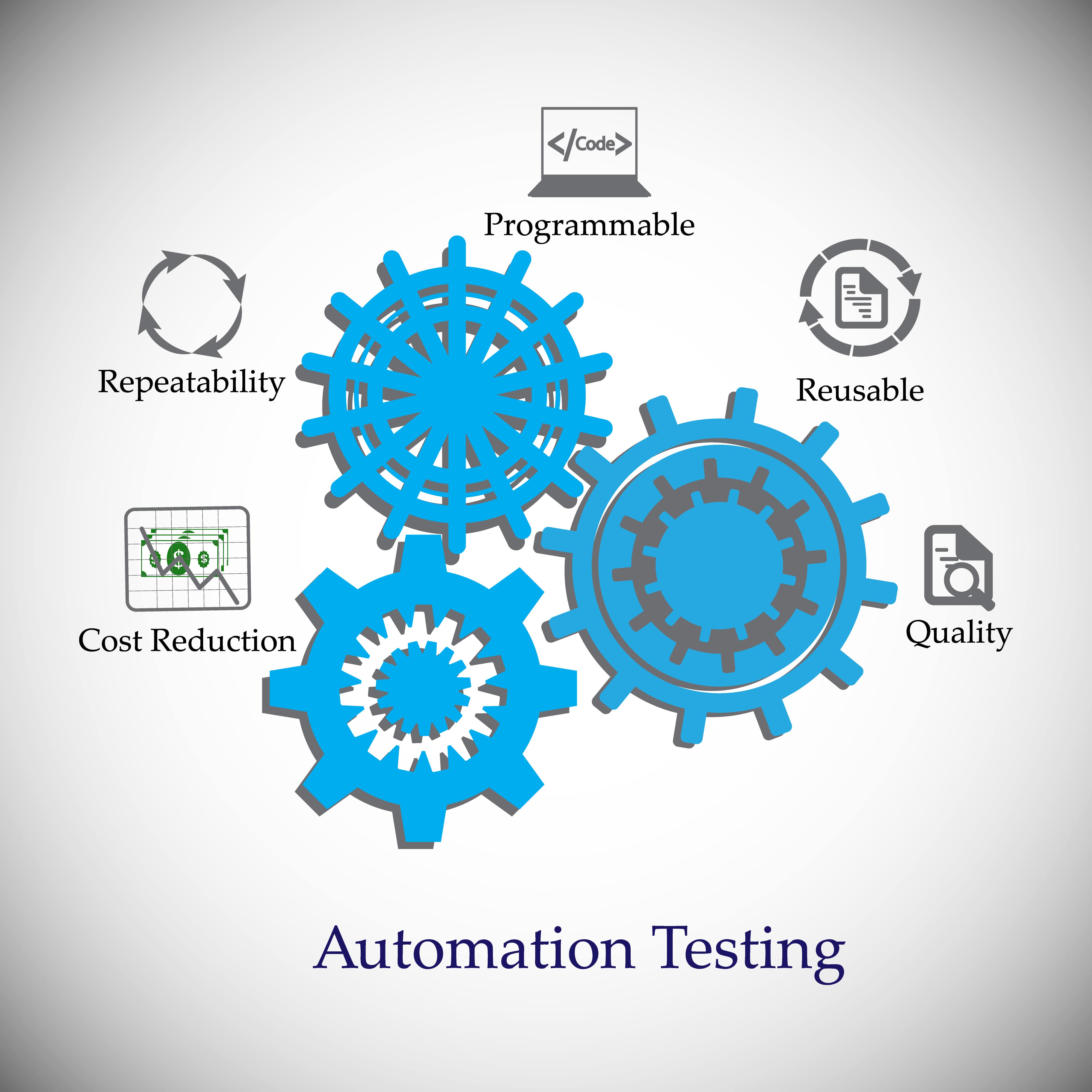The Best Guide to Implementing Automation Testing Successfully
The Best Guide to Implementing Automation Testing Successfully
Blog Article
Making Sure Success in Automation Evaluating: Trick Metrics, Obstacles, and Solutions Every QA Team Need To Know
In the realm of software program quality control, the landscape of automation testing is ever-evolving, requiring a thorough technique to make certain seamless operations. Trick metrics act as the compass assisting QA teams through the large surface of test automation, clarifying progression and areas for improvement. Difficulties loom huge, frequently casting shadows on the course to success. By recognizing these hurdles and applying efficient options, QA groups can browse via complexities with finesse. The journey to grasping automation screening is led with subtleties that need an eager eye for surveillance, evaluation, and continual improvement. automation testing. As the market drives forward, the quest for optimal performance in automation testing remains a constant quest, advising QA groups to outfit themselves with the expertise and techniques vital for accomplishment.
Significance of Key Metrics
Comprehending the relevance of essential metrics is essential for reviewing the efficiency and efficiency of automation testing processes. Key metrics act as measurable steps that provide beneficial insights into different aspects of the screening process, such as examination protection, test implementation time, defect thickness, and examination situation effectiveness. By examining these metrics, QA groups can identify traffic jams, inadequacies, and areas for renovation within their automation testing structure.
One vital aspect of vital metrics is their capability to track progress and keep an eye on the overall health and wellness of the testing process (automation testing). They make it possible for stakeholders to make enlightened decisions based upon data-driven insights, which can cause more effective screening techniques and better source allotment. In addition, key metrics can aid groups set sensible objectives, gauge the success of automation initiatives, and show the ROI of automation screening efforts

Typical Difficulties Dealt With
Difficulties frequently run into in automation testing processes can substantially influence the total effectiveness and performance of QA groups. Automation screening might not cover all facets of screening, such as use and user experience screening, which still call for hand-operated treatment. Getting over these challenges requires proper preparation, calculated examination instance option, durable upkeep procedures, appropriate sources, and a clear understanding of the restrictions of automation screening.
Reliable Solutions for Obstacles
To resolve the barriers run into in automation screening, executing efficient solutions is essential for boosting the performance and efficiency of QA teams. One vital option is to buy robust training programs for QA groups to ensure they have the necessary abilities to successfully use automation devices. Training can link expertise gaps, boost understanding of automation structures, and enhance scripting abilities, eventually causing a lot more reliable examination creation and implementation.
One more vital option is to establish clear interaction channels within the QA group and with other stakeholders, such as programmers and job supervisors. Efficient interaction helps in straightening assumptions, sharing progression updates, and immediately dealing with concerns or obstructions that might see arise during the automation testing procedure.

Monitoring and Analysis Techniques
Implementing reliable surveillance and analysis techniques is crucial for guaranteeing the success and effectiveness of automation testing procedures. By using tracking tools, QA groups can track the efficiency of test scripts, identify traffic jams, and identify locations for enhancement. Real-time monitoring enables quick discovery of problems, allowing rapid feedback and resolution. Furthermore, analyzing examination results and metrics gives important understandings right into the top quality of the software application being evaluated and the performance of the testing approach.
One key strategy in monitoring and analysis is using control panels that consolidate appropriate metrics and KPIs in a visually obtainable format. These dashboards use a comprehensive summary of examination implementation standing, test protection, issue trends, and other important details. On a regular basis assessing and analyzing these dashboards can aid QA teams make informed decisions, prioritize tasks, and enhance screening initiatives.
Furthermore, implementing automated informs and alerts based upon predefined limits can boost proactive monitoring and timely intervention. By establishing alerts for efficiency variances or examination failings, teams can attend to problems without delay and stop them from rising. On the whole, tracking and analysis techniques play an important role in guaranteeing the effectiveness and success of automation testing campaigns.
Continuous Improvement Strategies
Enhancing the efficacy of automation screening processes demands the constant improvement of techniques and methodologies. One essential strategy to enhancing automation screening procedures is to look what i found conduct routine reviews and retrospectives.

Conclusion
In verdict, it is vital for QA teams to recognize the essential metrics, challenges, and options in automation testing to ensure success. By meticulously checking and evaluating information, carrying out effective options to common difficulties, and continuously boosting methods, QA groups can optimize their testing processes and deliver top quality software. Sticking to these practices will inevitably result in extra efficient and efficient automation screening practices.
By examining these metrics, More hints QA groups can identify traffic jams, inadequacies, and areas for enhancement within their automation screening structure.
In addition, essential metrics can help teams established realistic goals, determine the success of automation campaigns, and show the ROI of automation testing efforts.
Difficulties generally encountered in automation testing procedures can significantly impact the general effectiveness and performance of QA groups. Automation screening may not cover all elements of screening, such as use and customer experience testing, which still require manual intervention.In conclusion, it is important for QA groups to comprehend the vital metrics, challenges, and services in automation testing to guarantee success.
Report this page